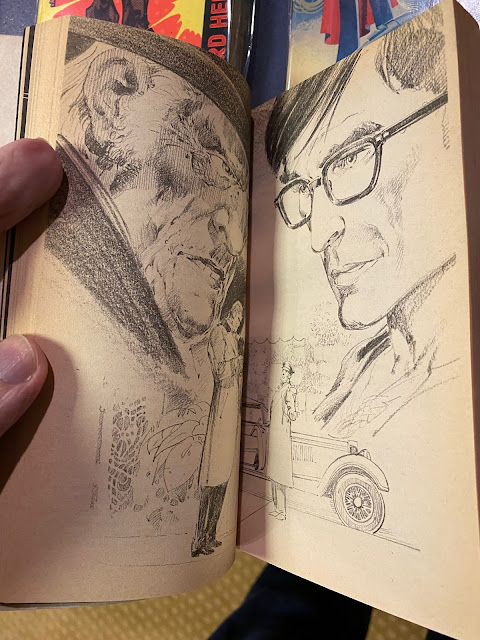One of the bonuses of living in the US Midwest is that you’re never far from a comic mart. (Mrs B does not agree with this sentiment). Thanks to the chaps at the “epguides” site, a schedule is published of all upcoming marts in Illinois and surrounding states, so with a full tank of petrol it is possible to find a mart open on any given Sunday.
The thing about these mid-America marts is that they are patronized by local dealers and customers from rural areas ; the prices are reasonable and dealers are willing to negotiate on price.
So today being a particularly bright, sunny and warm day - clear blue skies - I headed off to Rockford, Illinois for a gander at what was on show. The mart was held at the VFW (Veterans of Foreign Wars) hall - (the equivalent of the British Legion) - and when I arrived there were probably 50 customers and 12 dealers.
 |
| Punters at today's mart |
I took a quick snap as I entered, and it struck me (not for the first time) that most dealers and customers were getting on in years. Including me. Casting my mind back to the Seventies, and attending the Lyndhurst Hall mart in Kentish Town, London, I think that everyone then was still of a similar age - just that we were all youngsters. The last time I went to a Sunday Lyndhurst Hall mart was January 6th 1976 ; the only person of my current age then was my Dad, who had come up to London with me for the day.
I don’t believe that the Comic Mart as an event has changed one whit in fifty years. Just comics in card board boxes on trestle tables, and mainly blokes with lists searching for elusive Silver Age and early Bronze-Age comics. As the years go by, will this type of mart survive, or wither on the vine? I believe it is already part of a bygone age.
In the end , I picked up only one comic; a nice copy of Brave & Bold #67 caught my eye - the first team-up of Batman and Flash - for $18. This issue was the first American comic I ever had. You can read about it here.
It crossed my mind “This is where I came in; perhaps a good point to stop.”
© Ian Baker




